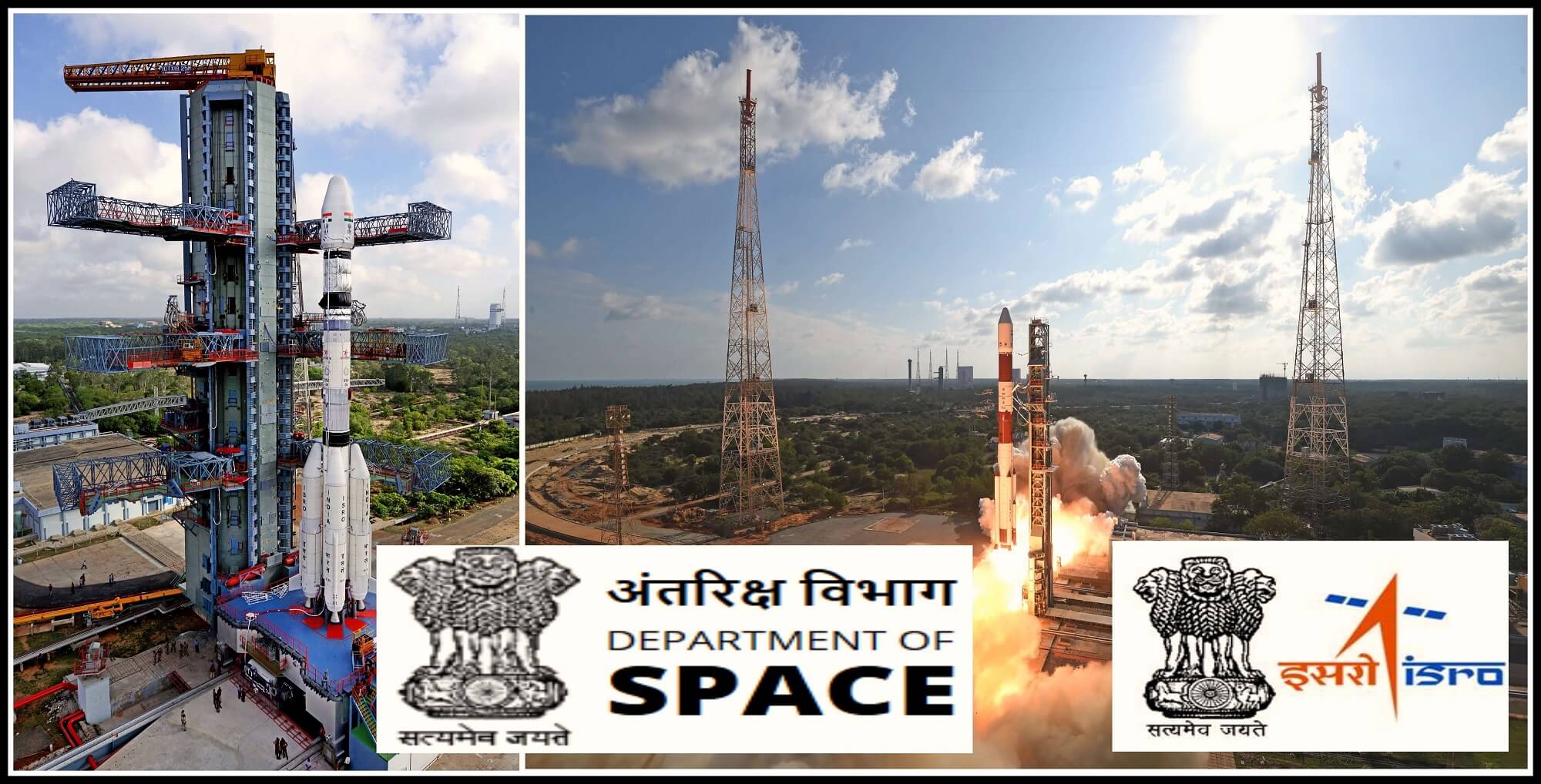Government Schemes and Programs
Department of Space – Schemes and Programs
Department of Space
Table of Contents
About Department
- India decided to go to space when Indian National Committee for Space Research (INCOSPAR) was set up by the Government of India in 1962. With the visionary Dr Vikram Sarabhai at its helm, INCOSPAR set up the Thumba Equatorial Rocket Launching Station (TERLS) in Thiruvananthapuram for upper atmospheric research.
- In 1969, (INCOSPAR) was reconstituted as an advisory body under the India National Science Academy (INSA) and the Indian Space Research Organisation was established. Vikram Sarabhai, having identified the role and importance of space technology in a Nation’s development, provided ISRO the necessary direction to function as an agent of development. The Government of India constituted the Space Commission and established the Department of Space (DoS) in 1972 and brought ISRO under DoS management on 1 June 1972.
Vision
-
- Harness space technology for national development, while pursuing space science research and planetary exploration.
Mission
-
- Design and development of launch vehicles and related technologies for providing access to space.
- Design and development of satellites and related technologies for earth observation, communication, navigation, meteorology and space science.
- Indian National Satellite (INSAT) programme for meeting telecommunication, television broadcasting and developmental applications.
- Indian Remote Sensing Satellite (IRS) programme for management of natural resources and monitoring of environment using space based imagery.
- Space based Applications for Societal development.
- Research and Development in space science and planetary exploration.

BHUVAN-ISRO’S GEO-PORTAL
Objectives
-
- To develop a software application which allows users to explore a 2D/3D representation of the surface of the Earth
Salient Features
-
- It provides 1m resolution satellite data for more than 350 cities and services several application for their remote sensing application needs.
- Various programs using its services –
-
- ENVIS program of Ministry of Environment, Forests & Climate Change.
- Bhuvan Panchayats Web Portal which facilitates decentralised planning at grassroot level
- Bhuvan Ganga mobile app and web portal which ensures people participation in providing vital information for Clean Ganga project
-
- The portal also, provides the detailed information regarding household amenities data and Census Population data at district and village level respectively.
- It supports disaster management and also provides active support for flagship programmes of the government including Integrated Watershed Development Program, National Mission for Clean Ganga, AMRUT etc.
YUVA VIGYANI KARYAKRAM (YUVIKA)
Objectives
-
- Aimed at imparting basic knowledge on Space Technology, Space Science and Space Applications to the young students with the intent of arousing their interest in the emerging areas of Space activities.
- Help students to appreciate what they are being taught in the school and its real application in Space Science & Technology.
Salient Features
-
- 3 students from each State/ Union Territory to be selected to participate in this programme every year covering CBSE, ICSE and State syllabus. Those who have finished 8th standard and currently studying in 9th standard will be eligible for the programme.
- Chief Secretaries of the respective States/ Administrators of Union Territories in India to arrange for the selection of three students from each of their State/UT and communicate the list to ISRO.
- Students belong to the rural area have been given special weightage in the selection criteria.
YOUNG SCIENTIST PROGRAMME
Objectives
-
- To inculcate and nurture space research fervor in young minds
Salient Features
-
- Under this 1-month program, 3 students from each of the 29 States and 7 UTs will be selected.
- Students mostly from class VIII will be given lectures and access to R&D labs and practical experience of building a small satellite.
- It is conceptualized after the similar Programme run by the American Space Agency NASA.
- All the expenses of travelling and boarding will be funded entirely by ISRO.
- Under this, six incubation centres will be established in various parts of the country – North, South, East, West, Centre and North-East, and the first such centre has been established in Agartala in Tripura.
OTHER SCHEMES OF DEPARTMENT OF SPACE
|
Schemes/Initiatives |
Objectives & Features |
Samvad with Students
|
|
Unispace Nanosatellite Assembly & Training programme (UNNATI) |
|
Sakaar |
|
To read and learn about Government Schemes and Programs related to other Ministries, Click Here. (Notes on all Government Ministries Schemes and Programs)


Hello.This post was really motivating, especially because I was looking for this subject last Sunday.